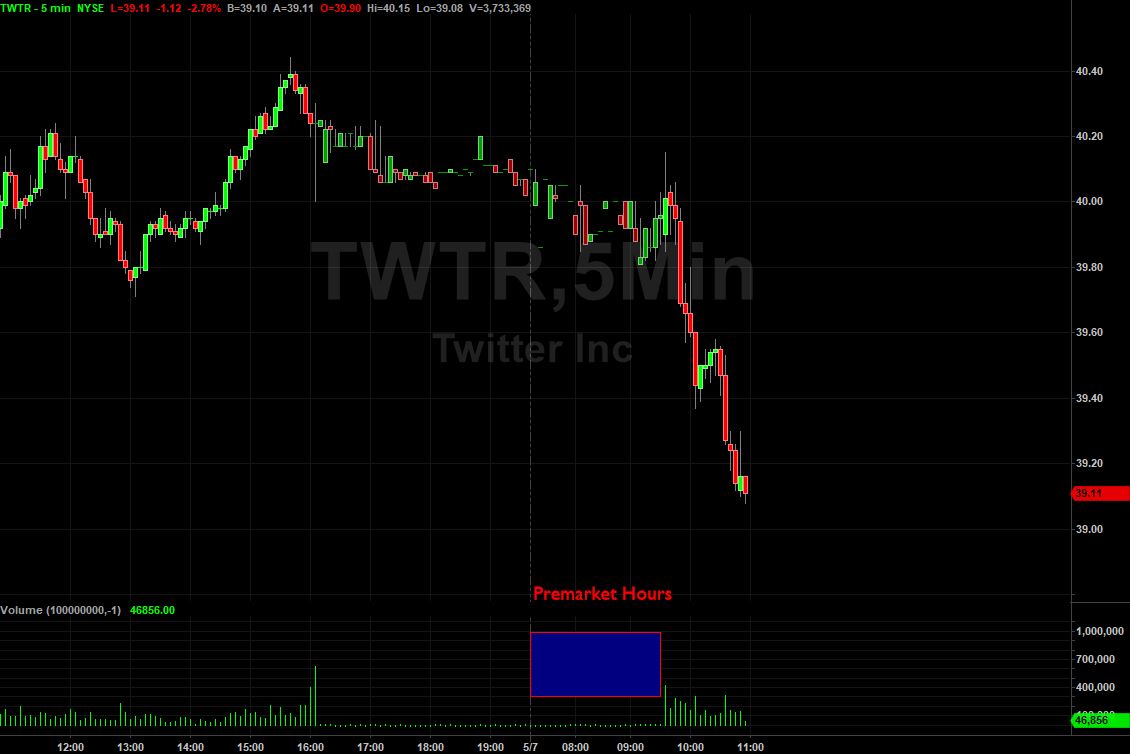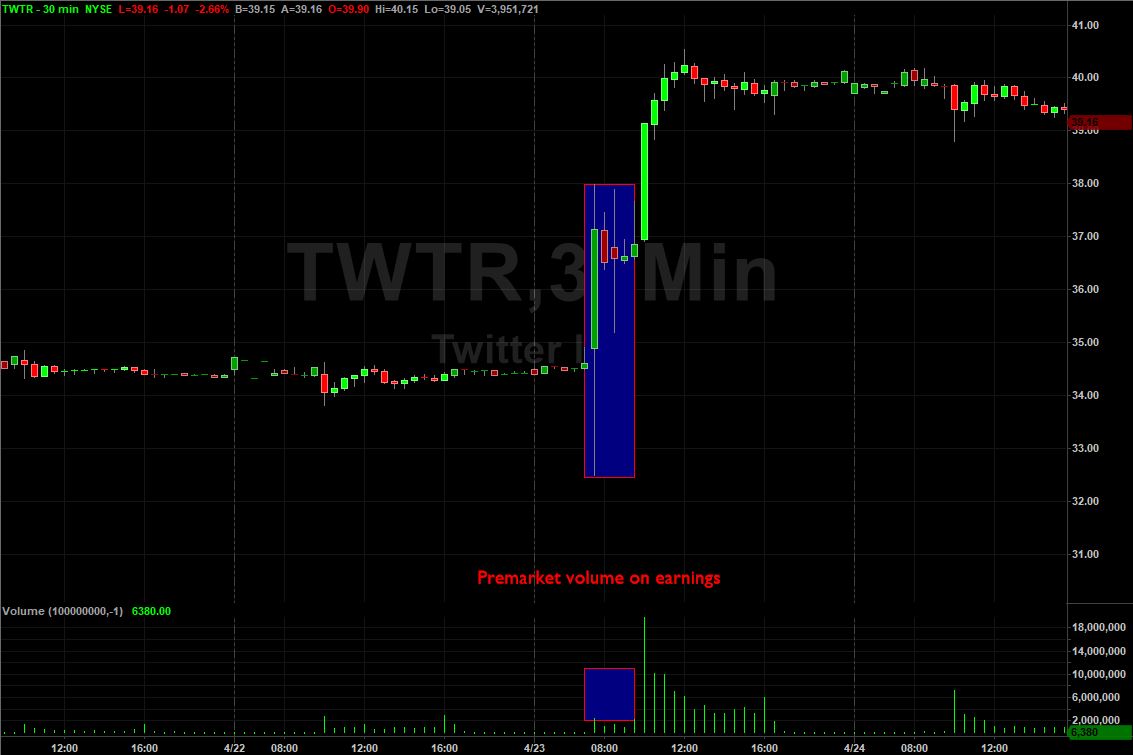Premarket trading occurs during the time period before the stock market opens, which usually happens between 8:00 a.m. and 9:30 a.m EST.
Many stock traders focus on how shares of a company perform after the opening bell and completely disregard the premarket trading session.
The major U.S. stock market exchanges open for normal trading from 9:30 a.m. ET to 4:00 p.m. ET, Monday through Friday unless it is a holiday.
Thousands of stock traders are drawn to the exchanges immediately following the opening bell . The stock market is crowded during regular hours of trading which is why some investors have embraced the premarket session, a less crowded time to trade.
However, there are some drawbacks/risks with trading in the premarket which we will cover below.
Premarket Trading Hours
Premarket trading is the trading session that happens before the normal trading session starts. The session allows both institutional investors and individual traders to trade stocks between 4:00 a.m. ET and 9:30 a.m. ET.
Brokers, however, can determine the exact timeframe during which premarket trading takes place. One broker may decide to offer trading running from 4:00 a.m. ET to 9:30 a.m. ET, while another may offer it from 6:00 a.m. ET to 9:30 a.m. ET.
For example, TD Ameritrade offers premarket trading from 8:00 a.m. ET to 9:15 a.m. ET, while premarket trading at Scottrade begins from 6:00 a.m. ET to 9:28 a.m. ET. Some brokerage firms do not offer trading in the premarket at all.
Premarket trading occurs on electronic market exchanges, and it has been growing in popularity since 1990 as investors continue to embrace the idea of trading stocks over electronic communication networks.
In the past, only hedge funds, banks, insurance companies, mutual funds, and other institutional investors were allowed to place premarket orders.
Premarket Stock Trading
Before trying to place your first premarket order, it is important to watch premarket trading for some time to understand the entire process.
Premarket Trading Tips
Before jumping into trading during the premarket, make sure you know these rules:
- You can only place limit orders
- Orders are only good for that session, they do not carry over to the regular market session
- Premarket sessions are typically much less liquid
- Premarket orders are matched electronically through ECNs
- Brokers can set their own rules for premarket trading, so make sure to check with them!
-
The platform provided to you by your broker should have tips on how to buy and sell shares during premarket sessions. Premarket orders are not executed as easily as those executed during regular hours.
Brokerage firms only accept limit orders (those directing the firms to sell or buy shares at a given price) in premarket. Your broker will not execute your order if the shares are not trading within the designated limit.
The orders have limitations as well: 25,000 is the maximum number of shares per order. Brokers only honor premarket orders for the precise session in which investors placed them.
There is no guarantee that premarket orders are placed before the opening bell if trading activity is significantly low, but it is certain that they are not carried over into the normal trading hours.
The procedure and cost of trading stocks during premarket hours also depends on the broker.
Brokers
TD Ameritrade and Scottrade simply charge their regular commissions to trade shares in premarket sessions. Others, such as E*TRADE charge an extra $0.005 a share for pre-market trades. Brokers also often provide particular premarket policies that is usually available on their websites.
Remember that the premarket trend and price range can take a different course after the opening bell. Getting caught up in a position that backfires ferociously after the open is one of the worst situations.
There tend to be many stop orders during premarket session that are ready to trigger prices after market opens.
The orders can result in tidal waves of momentum against existing positions, which is why investors should close their positions before opening bell.
Premarket Trading Example
As you can see in the Twitter (NASDAQ: TWTR) chart above, premarket volume is very light. The only thing that can change that is news during off market hours like buyouts, mergers and most commonly earnings.
It’s very risky to trade the premarket when volume is this light because you are susceptible to illiquidity which can make it very hard to exit a position without a lot of slippage.
Above is an example of premarket trading after earnings were released. You can see there is significantly more volume (although still quite less than normal market hours) as traders are reacting to the earnings news.
Stocks can be incredibly volatile during this time BUT there is also more liquidity which will make it easier to get in and out of a trade.
If you are new to trading you should avoid trading during this time. It’s just too risky and there is plenty of opportunity during normal market hours to capitalize on.
Risks Involved
Risks inherent in the premarket:
- Illiquidity, very light volume
- Limit orders only, can’t bail with market order
- Potential for extreme volatility
- Wider spreads
Investors with online trading accounts can buy stocks in premarket hours if their brokerage firms provide this option.
But even though premarket trading allows investors to trade shares as early as 4:00 a.m. ET, there are less sellers and buyers during the session.
Most investors are usually sound asleep, so even small orders can distort prices.
Sellers and buyers of most stocks can trade speedily with each other during regular trading sessions, unlike in premarket hours when investors experience less trading activity thus making it challenging to execute some of their orders.
Less trading volume might also mean bigger spreads between the ask and bid prices. Therefore, investors could find it more grueling to get as favorable share prices as they could have during normal trading sessions.
Limited trading activity also means that investors may find greater price fluctuations than they would have seen during regular hours of trading.
In spite of the risks associated with premarket trading, this type of trading is beginning to attract keen interest from investors.
Premarket trading allows investors to respond fast to major events and news, such as political turmoil overseas or sudden corporate misfortunes that are affecting a stock, even before the market opens.
See what the hottest stocks are for the trading day by visiting our premarket gap scanner and don’t forget to bookmark it!
Bottom Line
Placing trades in the premarket trading sessions may not be a great place for new traders looking to try their luck in the stock trading world due to the inherent risks mentioned above.
However, once you are comfortable with those risks, trading with a small position at first is a good way to test the waters.
A lot of traders like trading the premarket because of the volatility, so take your time and learn the ropes before diving in!
One last note, remember to always check for upcoming news releases especially any economic data reports that may affect stock prices drastically!
Happy trading!





